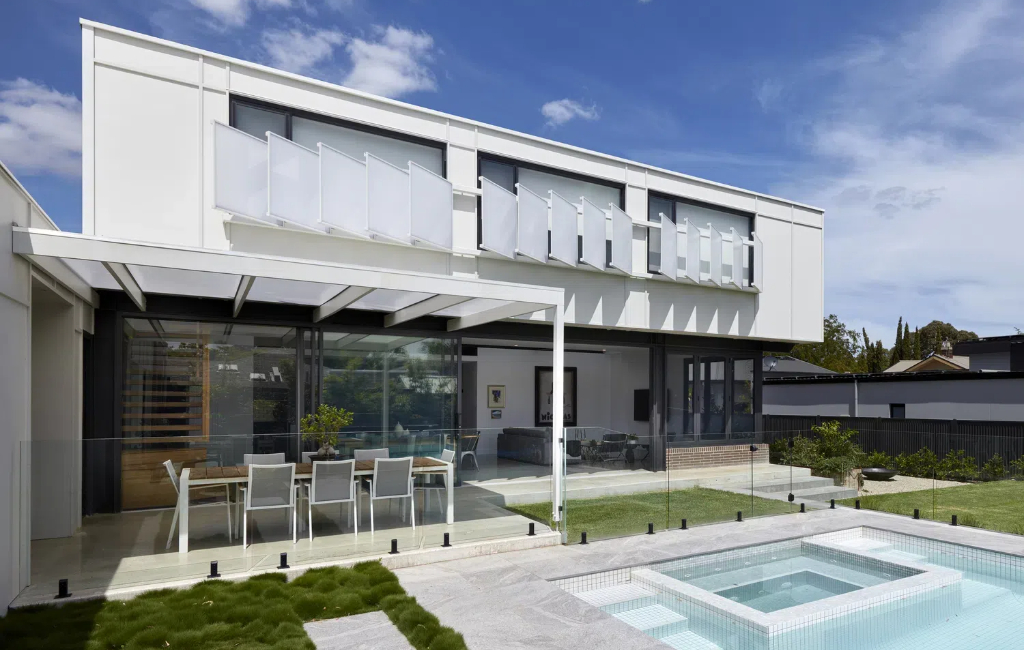Do Glass Railings Require a Top Rail?
Introduction
Glass railings have become a prominent feature in modern architecture, valued for their sleek, transparent design that enhances open spaces and offers unobstructed views. These railings are often used in residential, commercial, and public spaces where aesthetics and safety are paramount. However, as with any architectural element, the design of glass railings must balance form and function. A critical question arises: do glass railings require a top rail? This essay will explore this question by examining the safety concerns, aesthetic considerations, and building code requirements that influence the use of top rails in glass railing systems.
Safety Considerations
One of the primary functions of any railing system is to ensure the safety of the people who use it. The top rail plays a crucial role in the structural integrity of a railing system. It provides additional support to the glass panels, helping to distribute force and reduce the risk of panel movement or failure. Without a top rail, the glass panels may be more vulnerable to impacts, which could compromise the stability of the entire railing. Furthermore, safety regulations and building codes, such as those outlined in the International Building Code (IBC), often include specific requirements for railings. These codes sometimes mandate the inclusion of a top rail to ensure that the railing system meets safety standards. For example, the top rail may be required to prevent accidents by offering a secure handhold and additional support in case of a panel breakage.
The risk of glass breakage is another critical safety concern. In the event that a glass panel shatters, a top rail can prevent the entire railing system from collapsing by holding the broken pieces in place. This reduces the likelihood of serious injury and provides a critical line of defense until repairs can be made. Without a top rail, there is a greater risk that a broken panel could lead to a more significant failure of the railing system, endangering users and bystanders alike.
Aesthetic Considerations
In addition to safety, aesthetics play a significant role in the design of glass railings. Modern architectural trends often favor minimalist, frameless designs that emphasize transparency and openness. Frameless glass railings without top rails are popular in this context because they provide a clean, uninterrupted view, which enhances the visual appeal of the space. The absence of a top rail can create a sense of seamless integration between the indoor and outdoor environments, making spaces feel larger and more connected to their surroundings.

Glass railing without top rail

Glass railing with top rail
However, while the minimalist design is appealing, the presence of a top rail does not necessarily detract from the overall aesthetic. In many cases, designers can integrate a top rail in a way that complements the glass panels and adds to the visual interest of the railing system. For example, a slim, metal top rail can provide a subtle contrast to the glass while maintaining the desired modern look. Additionally, the top rail can serve as a design element that enhances the functionality of the railing, offering a comfortable handhold without compromising the aesthetic appeal.
Practical Considerations
Beyond safety and aesthetics, practical considerations also play a role in the decision to include a top rail in a glass railing system. Maintenance is a key factor, as glass railings require regular cleaning to maintain their transparency and appearance. A top rail can simplify maintenance by providing a clear division between panels, making it easier to clean and maintain each section of the railing. Furthermore, the top rail can protect the edges of the glass panels from damage caused by weather, temperature fluctuations, and other environmental factors, which can prolong the life of the railing system.
Cost is another practical consideration. While installing a top rail may increase the initial cost of the railing system, it can also provide long-term cost benefits by enhancing the durability and safety of the railing. Over time, the additional support provided by a top rail can reduce the likelihood of costly repairs or replacements, making it a worthwhile investment. On the other hand, glass railings without top rails may require more frequent maintenance and may be more susceptible to damage, potentially leading to higher costs in the long run.
Case Studies and Real-World Examples
To better understand the implications of using or omitting a top rail in glass railing systems, it is helpful to examine real-world examples. Several successful implementations of glass railings without top rails can be found in modern buildings and public spaces. These examples often highlight the aesthetic benefits of a frameless design, showcasing how the absence of a top rail can create a striking visual impact. However, these projects also typically involve careful consideration of safety measures, such as the use of laminated or tempered glass to reduce the risk of breakage.
Conversely, there are also many examples of glass railings that incorporate a top rail, particularly in settings where safety is a primary concern. For instance, in high-traffic areas such as airports or shopping malls, the inclusion of a top rail provides an added layer of security and support, ensuring that the railing system can withstand the demands of frequent use. These examples demonstrate that while top rails may not always be necessary, they can offer significant benefits in terms of both safety and durability.
Conclusion
In conclusion, the decision to include a top rail in a glass railing system depends on a variety of factors, including safety, aesthetics, and practical considerations. While modern design trends may favor the clean, uninterrupted lines of a frameless glass railing, the inclusion of a top rail can provide crucial structural support, enhance safety, and reduce long-term maintenance costs. Building codes and regulations often require a top rail for these reasons, especially in settings where the risk of accidents or panel breakage is higher. Ultimately, the choice between a glass railing with or without a top rail should be made with careful consideration of both the functional and aesthetic needs of the space. While top rails may not be required in every situation, their benefits make them an important element to consider in the design and installation of glass railing systems.
